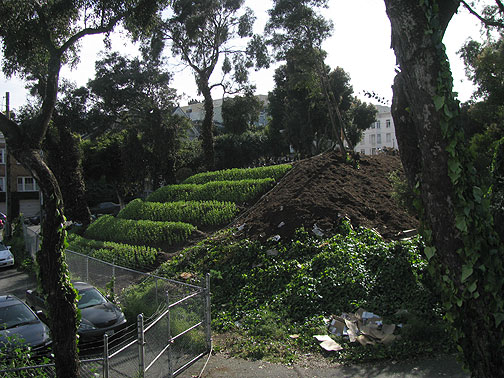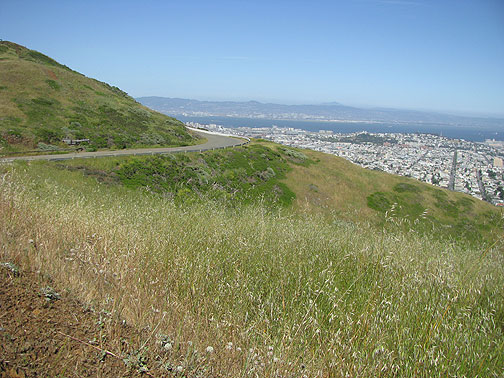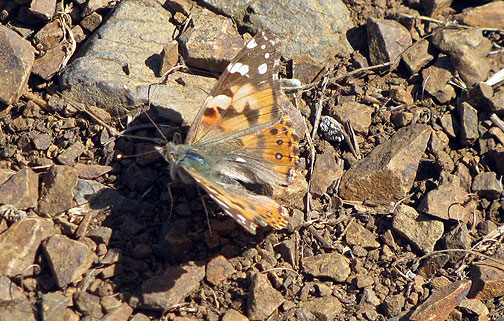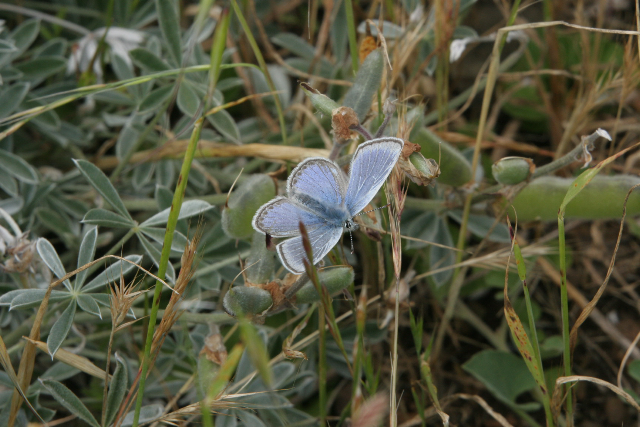“Circle the Food Wagons!” I gave that title to a Shaping San Francisco Talk we had last night at Counterpulse, featuring folks from local small farm/gardening projects and also John Garrone, who is the “mushroom guy” at the Heart of the City Farmers’ Market. It was one of those evenings that makes me happy and proud to be hosting this ongoing series of Talks. Smart, engaging speakers presented their histories, politics, and passions, followed by equally compelling questions and comments from the audience that extended and deepened the reach of the discussion. Much to my chagrin, we had a technical failure with our usual digital recording, so while we had a great evening, no one will be able to hear it via our online archive.
Instead, I’m going to try to summarize some of the highlights here. Leading the presentation were Brooke Budner and Caitlyn Galloway who are co-owners of Little City Gardens, a market-garden business in San Francisco. They described their year-long process of deciding that the gap they wanted to fill in the local food ecology was that of the small, self-sufficient producer, a small business that could survive on its own sweat and effort by selling the food it grows. They started on a 16th of an acre plot in a Mission district backyard growing artisanal salad greens, and with success in their first year, decided to seek a larger piece of land on which to expand their efforts. They used the Kickstarter website to launch a fundraising campaign that netted them $20K in small donation startup capital, found a landowner with a ¾ acre plot under the I-280 freeway in the southern part of the City, signed a one-year lease, and began clearing land. Before long they learned that the vague assurances they had gotten at the Dept. of Planning about their compliance with zoning regulations were unfounded. Now they’re trying to gain an exemption from the arduous process of getting a conditional use permit (which could take over a year and cost up to $8,000). They are also planning to seek permission to drill a well directly into the very high water table beneath the land, which is probably either fill or original riparian corridor along Islais Creek, still burbling along beneath the neighborhood on its way to the Bay. Little City Gardens is still taking donations and offers a quarterly magazine, hand-screen prints, and other goodies to their supporters, in addition to abundant fresh produce that they sell to local restaurants.
Continue reading Seeds of Urban Agriculture Taking Root

















